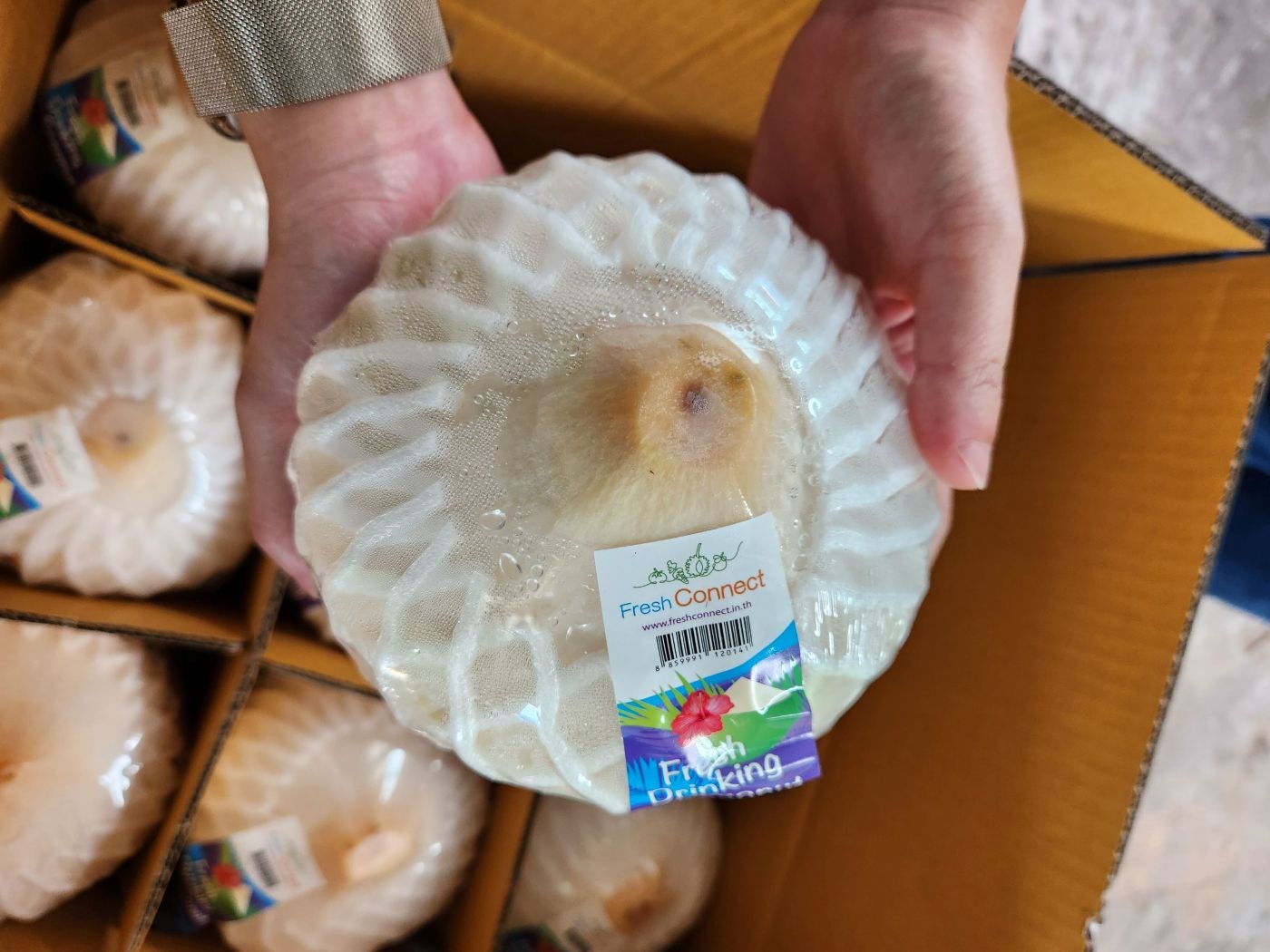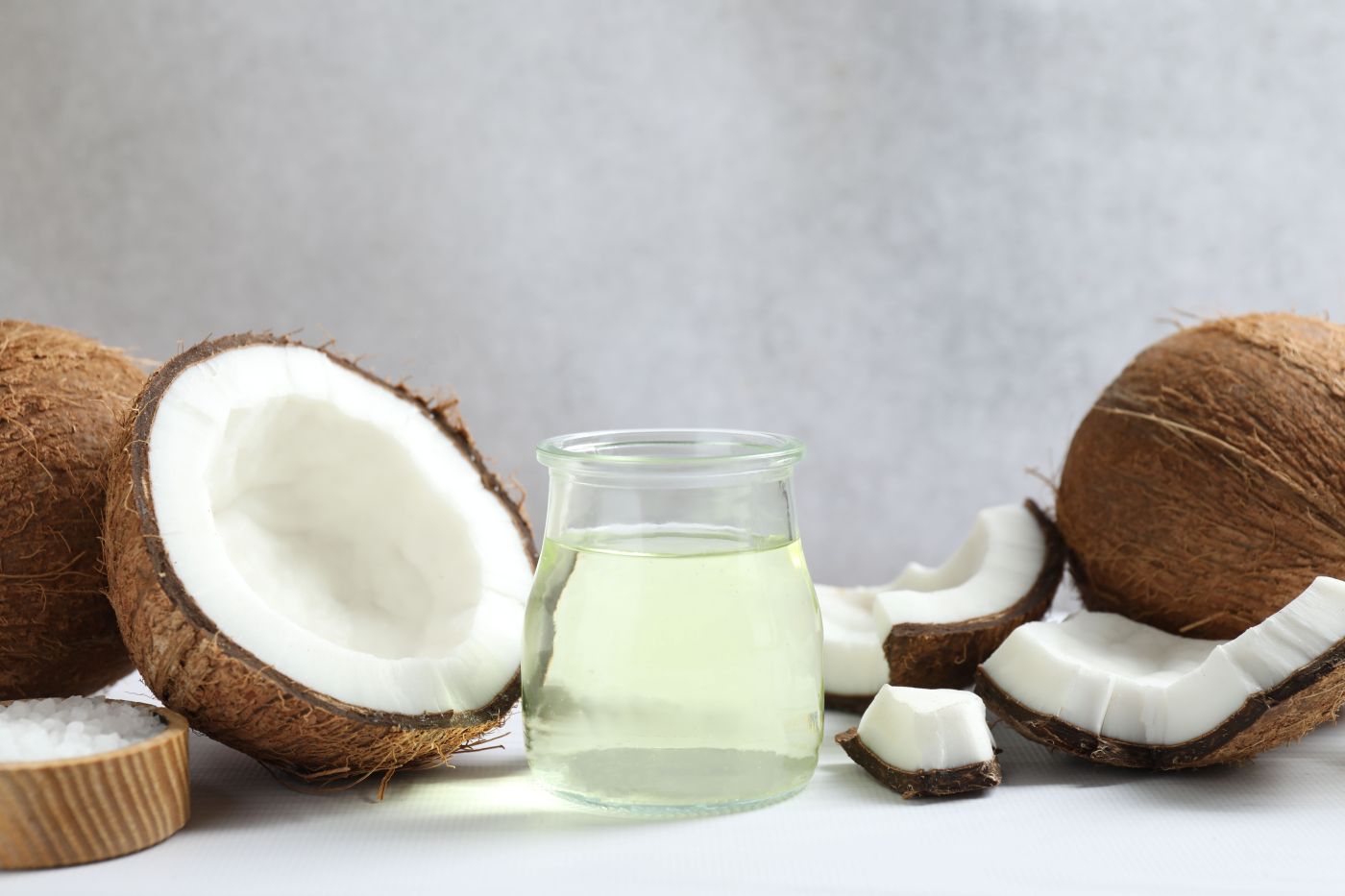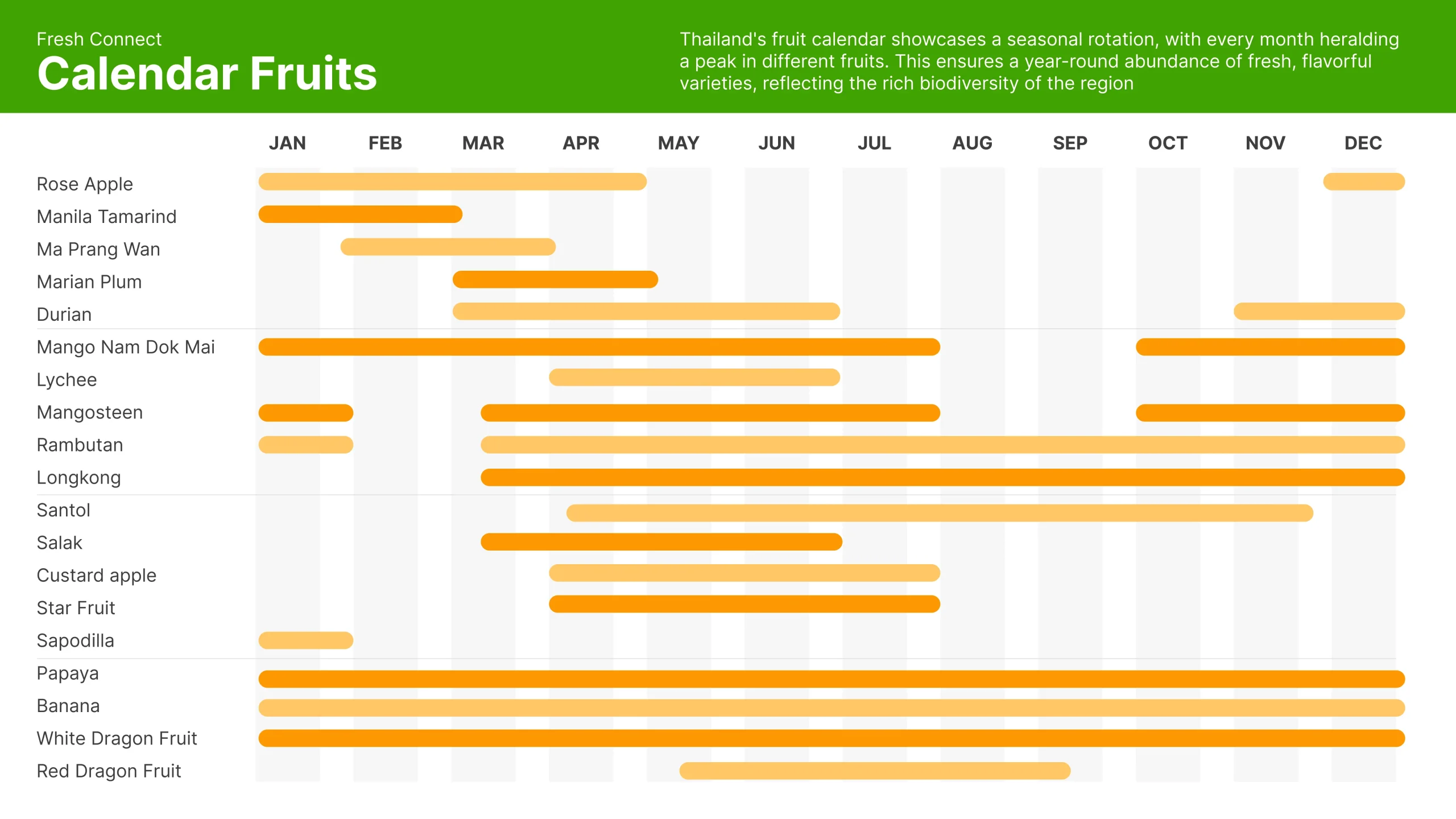Did you know the global coconut water market is projected to reach $14.6 billion by 2026? This explosive growth means businesses need to understand what sets premium coconuts apart from ordinary ones. When comparing Thai coconut vs regular coconut, the difference isn’t just cosmetic – it’s about flavor, quality, and customer satisfaction. For businesses sourcing Thai aromatic young coconut varieties, particularly the prized Nam Hom, making informed choices can transform your product offering and bottom line.
What Makes a “Thai Coconut” Different
Thai aromatic young coconut, locally known as Nam Hom (meaning “fragrant water”), stands out from standard coconut varieties in several ways. These coconuts are harvested from Thailand’s coastal regions and central plains, where mineral-rich soil and optimal climate conditions create exceptional growing environments.

Thai ‘Nam Hom’ Coconut – The Aromatic Jewel
Key characteristics include:
- Size and shape: Slightly smaller than typical Asian coconuts with a distinctive pointed top
- Appearance: Smooth, light-colored exterior with a characteristic diamond-shaped crown
- Flavor profile: Naturally sweeter water with delicate floral notes
- Texture: Soft, jelly-like flesh that melts in your mouth
- Water content: 300-600ml per coconut, depending on maturity
The terroir plays a crucial role. Saltwater intrusion in coastal areas adds a unique mineral profile to the soil, giving Nam Hom coconuts their signature sweet taste and aromatic qualities that customers recognize and love.
“Regular” Coconut – What You’ll Commonly See
Regular coconuts typically refer to mature brown coconuts or generic young green coconuts from various origins. These coconuts feature heftier shells, denser white flesh, and less aromatic water. While perfectly good for certain applications, they lack the premium characteristics that set Thai varieties apart.
Common uses for regular coconuts include:
- Coconut milk and cream production
- Coconut oil extraction
- Grated or shredded coconut for cooking
- Desiccated coconut products
The water in regular coconuts tends to be less sweet and lacks the subtle floral aroma that makes Thai coconuts so desirable for direct consumption.

How to Choose the Best Thai Coconut
Understanding how to choose a coconut can make or break your business reputation. Here’s how to pick a good coconut that will delight your customers:
- Visual inspection: Look for uniform green shells with minimal blemishes or brown spots. The pointed tip should be intact and well-formed.
- Weight test: A quality coconut feels heavier than it looks. This indicates good water content inside—exactly what your customers want.
- Shake test: Gently shake the coconut near your ear. You should hear minimal sloshing. Less movement means more water content.
- Aroma check: Fresh Thai coconuts emit a faintly sweet, coconut-flower scent. This is your quality indicator.
- Maturity level: Young but sufficiently mature coconuts offer the best balance of sweet water and tender flesh.
For B2B buyers, additional factors matter:
- Certifications: Look for GAP, HACCP, Global GAP, and Thailand Trust Mark
- Traceability: Ensure your supplier can track coconuts from farm to shipment
- Cold chain handling: Proper temperature control (2°C to 4°C) extends shelf life to 60-90 days
- Packaging quality: Diamond-cut or Easy Open formats add convenience and value
Choose Fresh Point for Bulk Thai Coconut for Import
Fresh Point has established itself as a trusted Thai coconut exporter and supplier serving international markets across China, Japan, South Korea, the USA, the Middle East, and Europe. Here’s why you should use us for bulk Thai coconut for import:
Quality Control And Sourcing
Fresh Point sources exclusively from Thailand’s top-growing regions, implementing strict quality checks at every stage. Their own packing house enables custom labeling and packaging under your brand.
Comprehensive Certifications
GAP, Global GAP, HACCP, USDA, IFOAM, and SMETA certifications guarantee international food safety standards.
Product Variety and Convenience
Choose from Diamond Cut coconuts (traditional preparation) or Easy Open coconuts (requires no tools). Both formats come trimmed and ready to sell.
Export Expertise
With established logistics connections and temperature-controlled shipping, Fresh Point ensures coconuts arrive fresh. Minimum orders start at one 40-foot reefer container (2,150 cartons, 9 coconuts each).
Year-Round Reliability
Fresh Point manages seasonal variability, handles export documentation, and maintains consistent supply. Our responsive B2B service means you get clear pricing without hidden costs.
Other than just shipping products, Fresh Point becomes an extension of your business – helping you navigate customs paperwork, manage costs, and grow market share.
Make the Smart Choice
When comparing Thai coconut vs regular coconut, the superior flavor and market appeal of Thai aromatic young coconuts are clear. Success in how to choose a coconut hinges on knowing the quality cues and partnering with trusted suppliers who understand international standards.
Fresh Point offers the consistency, certifications, and cold chain logistics that B2B buyers need. From sourcing to shipping, we handle the complexity so you can focus on delighting your customers.
Ready to elevate your coconut offering? Contact Fresh Point today to request a quote, sample shipment, or discuss a long-term partnership. Visit freshpoint.co.th to learn more.
References:
- How to Choose the Best Thai Young Coconuts: 5 Expert Tips. (n.d.). Retrieved October 8, 2025, from https://whistle-winds.mystrikingly.com/blog/how-to-choose-the-best-thai-young-coconuts-5-expert-tips

